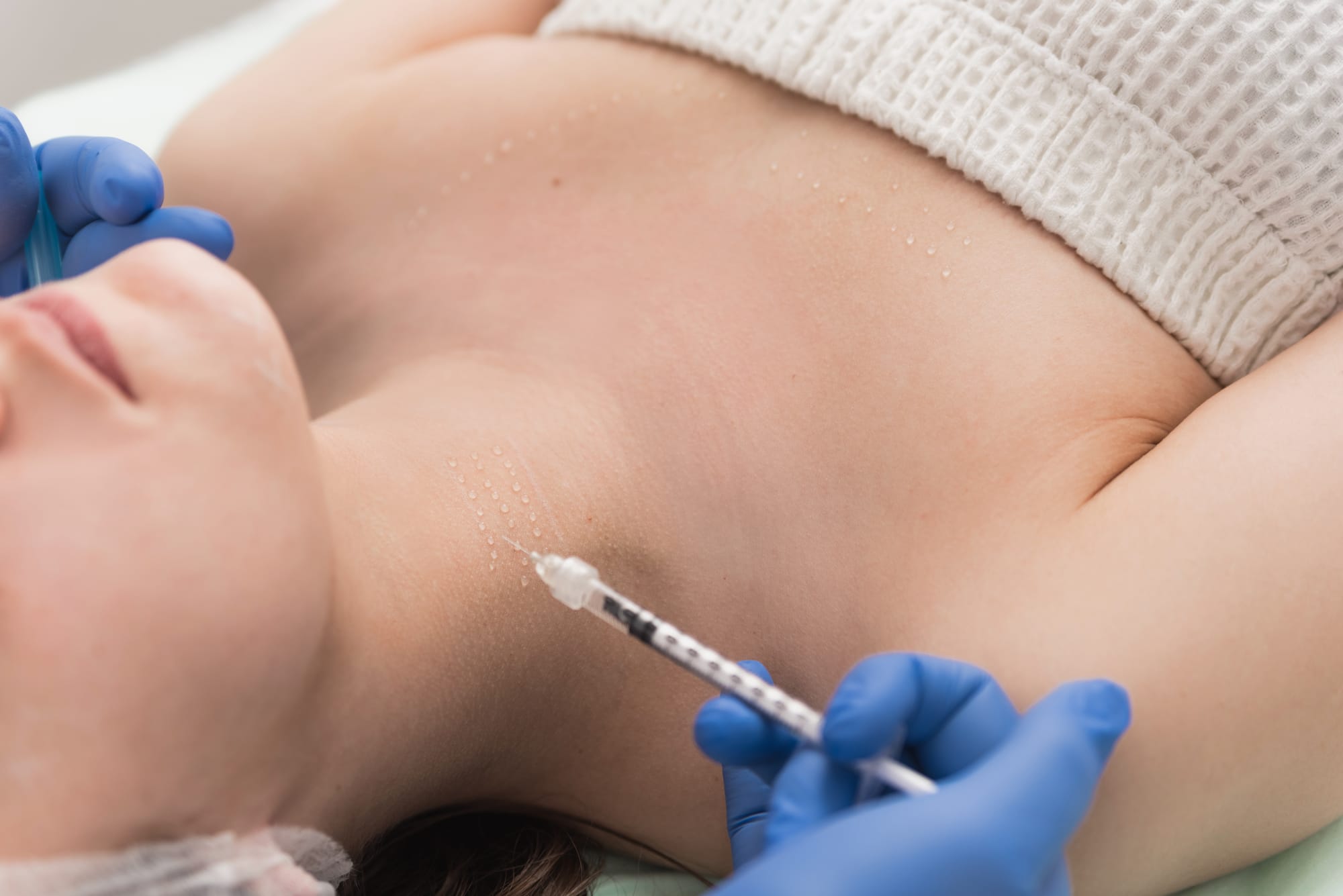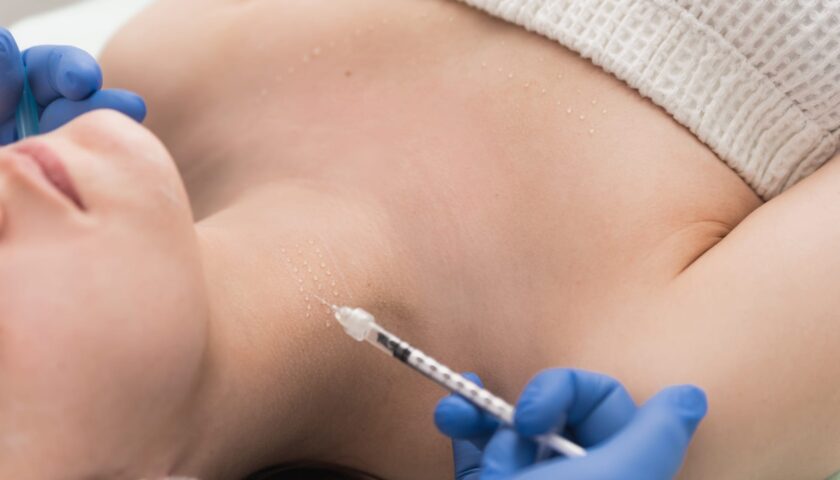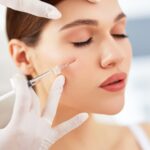
Over the years, the aesthetics industry has been constantly evolving, introducing new tools for rejuvenation and trying to combat the human aging process. It all began with Botox in 1950, which gained peak popularity in the 1990s after its official FDA approval. Since then, the toolkit for addressing patients’ aesthetic concerns has continued to expand. However, while various procedures and treatments were developed, achieving optimal skin firmness and hydration remained a challenge until the emergence of skin booster treatments.
These treatments have revolutionized the aesthetic field, offering medical professionals a very useful tool for directly addressing specific skin concerns, which could previously be achieved as a secondary benefit of dermal fillers and other procedures. With boosters, practitioners can now focus explicitly on enhancing skin texture, restoring radiance, and promoting a natural, youthful glow, elevating the standards of patient care to unprecedented levels.
What Are Skin Boosters?
Skin boosters, also known as injectable moisturizers, are a type of injectable treatment that uses small doses of hyaluronic acid (HA), the same substance found in traditional dermal fillers, which are carefully injected into the dermis layer of the skin to improve skin hydration, texture, and elasticity. The HA can be naturally found in our bodies and is great for attracting and retaining moisture, but as we grow older, we produce less and less of it, just like collagen. Once injected into the targeted area, the booster replenishes natural HA supplies, significantly enhancing the skin texture in the region and effectively concealing wrinkles and fine lines.
While facial rejuvenation is the primary application of skin booster injections, their versatility extends to other areas of the body, including the neck, thighs, back of hands, under the chin, and the inner and upper arms.
It’s important to note that, just like dermal fillers, the effects of boosters are temporary and will require regular touch-ups to maintain the patient’s results. They usually last up to 6 months, but the results can vary between individuals, their lifestyles, and the treated area.
How Are Boosters Different From Dermal Fillers?
While both dermal fillers and skin boosters use the same main ingredient, they don’t have the same properties. Dermal fillers use a thicker HA solution with a strong cross-link, while boosters have a more subtle consistency that disperses evenly when injected into the skin. Rather than restoring volume in specific areas, the boosters do what their name suggests: they boost the skin’s ability to capture and retain moisture, produce collagen, and additionally provide it with a boost of vitamins, antioxidants, and amino acids, which are all part of a skin booster injection.
As you can see, they have clearly different uses. You can use dermal fillers to contour faces, add volume, and sort out wrinkles, scars, and other fine lines. Boosters improve the skin’s texture and can hide some fine lines and wrinkles in the area, but that isn’t their primary function. They are better used as a prevention treatment than to actually deal with wrinkles and fine lines, which is something dermal fillers are much better at dealing with.
Skin Booster Injection Technique
As mentioned earlier, the booster formula is injected into the dermal layer of the skin, but the procedure resembles microneedling more than regular dermal filler injection. The formula can be injected using mesotherapy or the microdroplet technique.
It’s important to space the injection sites approximately 1 inch (3 cm) apart and administer microdoses of the booster formula using either a 30G long or short-beveled needle, but a cannula can be used as well to reduce the chance of bruising. The exact needle required can vary from brand to brand, so be sure to check the instructions.
Notable Brands
Truth be told, boosters aren’t anything new. Restylane Vital was the first skin booster on the market and got a European CE certificate back in 2004. It took some time for their popularity to grow, but they are now more popular than ever. Some clinics even report that they perform more skin booster treatments than Botox treatments. The most popular brands are:
- Restylane Vital
- Restylane Vital Light
- Juvederm Volite
- Teosyal Redensity I
- Rejuran Healer
Among all of them, Juvederm Volite, known as Skinvive in the US market, is the only one that has recently been approved by the FDA.
Skin Booster Benefits
Within the realm of skin rejuvenation, skin boosters have emerged as a remarkable solution with many benefits. Here they are, in no particular order:
- Improved Skin Hydration: Boosters enhance the skin’s ability to capture and retain moisture, resulting in a more hydrated and plump complexion.
- Reduced Fine Lines and Wrinkles: By stimulating collagen production and improving skin texture, boosters can help reduce the appearance of fine lines and wrinkles.
- Enhanced Skin Tone and Texture: Boosters can even out skin tone and improve overall skin texture, making the skin look smoother and more radiant.
- Long-Lasting Results: With the ability to stimulate collagen, the results of boosters can last for several months, providing prolonged rejuvenation.
- Versatility: Boosters can be used on various areas of the body, not just the face, making them suitable for addressing concerns in multiple regions.
- Minimal Downtime: The non-invasive nature of a skin booster treatment means that there is typically little to no downtime, allowing patients to resume their daily activities immediately.
- Natural-Looking Results: Boosters provide a subtle enhancement, ensuring that the skin looks refreshed and rejuvenated without an overfilled or artificial appearance.
- Suitable for All Skin Types: They are compatible with different skin types and can benefit individuals with varying skin concerns.
- Safe and Well-Tolerated: Since they use HA, a natural substance found in the body, they are generally safe and well-tolerated by patients.
- Customizable Treatments: Medical professionals can tailor the treatments to meet individual patient needs, ensuring personalized and effective outcomes.
Risks and Side Effects
While skin booster injections offer numerous benefits, it’s essential to be aware of the potential risks and side effects associated with them. These are similar to those of HA dermal fillers. We split them into two groups, common and uncommon.
Common Side Effects:
- Redness: Mild redness at the injection site is a common and temporary side effect.
- Lumps/Bumps: Small lumps or bumps may form but typically resolve on their own.
- Swelling: Temporary swelling is a common reaction to the injection.
- Bruising: Some patients may experience mild bruising at the injection site.
- Tenderness: Mild tenderness in the treated area is common.
- Pain: Patients may experience temporary discomfort or pain at the injection site.
- Firmness: Some individuals may notice increased firmness in the treated area.
- Discoloration: Temporary skin discoloration may occur.
- Itching: Mild itching at the injection site is a common side effect.
The common side effects of injectable skin boosters should go away on their own after seven days. If they persist longer than that, the patient should seek medical assistance and opinion. Most can be sorted out with medication, but each case needs to be checked individually.
Uncommon Side Effects:
- Infection: Although rare, infection is a possible side effect associated with almost any procedure involving injections.
- Inflammation: Some individuals may experience mild inflammation in the treated area.
- Dry Skin: Some patients may experience temporary dryness in the treated area.
- Allergic Reaction: Allergic reactions to the injection ingredients are rare but could require immediate medical attention.
- Nodules: Rarely, small nodules may form, but they usually resolve over time or can be treated by a medical professional.
- Blood Vessel Blockage: Extremely rare, but if a blood vessel gets blocked, immediate medical intervention is necessary.
- Increase or Decrease in Sensation: In rare instances, there may be changes in sensation at the injection sites.
- Abscess: Although uncommon, an abscess (collection of pus) may form, requiring medical evaluation and treatment.
Conclusion
Skin boosters go beyond traditional treatments, revolutionizing skin care by pre-empting early signs of aging and promoting lasting results. These versatile injections provide enhanced hydration, essential nutrients, and a refreshed appearance, making them a valuable tool for medical professionals seeking effective and non-invasive solutions. As the aesthetics industry progresses, skin boosters remain at the forefront, offering patients renewed hope and rejuvenation for vibrant, youthful skin. We at Medica Depot can assist you in finding a wide range of premium skin boosters to meet your patients’ unique needs.
FAQ
What does a skin booster do?
A skin booster enhances skin hydration, promotes collagen production, and revitalizes the skin, resulting in a refreshed and more youthful appearance.
Are skin boosters better than fillers?
Skin boosters are used to improve the skin’s overall health, while dermal fillers are used to add volume and hide wrinkles and fine lines. Though they may appear similar, they serve distinct purposes in addressing various concerns.
Are skin boosters better than Botox?
Skin boosters and Botox serve different purposes and are not directly comparable. Skin boosters improve skin health and hydration, while Botox targets muscle contractions to reduce wrinkles.
References
- The Effectiveness of Injectable Hyaluronic Acid in the Improvement of the Facial Skin Quality: A Systematic Review; Anjali Sharad Ghatge and Sharad Balasaheb Ghatge; Apr 2023
- Clinical experience with a new injectable hyaluronic acid designed to improve skin quality in a private clinic in Brazil: A retrospective cohort study; Daniel Dal’Asta Coimbra; Oct 2021
- Rejuvenating Effects of Facial Hydrofilling using Restylane Vital; Bong Moo Lee, Dong Gil Han, and Won Seok Choi; May 2015
- Biorevitalization of the skin with skin boosters: Concepts, variables, and limitations; Gulhima Arora, Sandeep Arora, Roxanna Sadoughifar, and Neha Batra; Aug 2021
- Injectable Non-Animal Stabilized Hyaluronic Acid as a Skin Quality Booster: An Expert Panel Consensus; Magda Belmontesi, Francesca De Angelis, Carlo Di Gregorio, Ivano Iozzo, Marina Romagnoli, Giovanni Salti, and Matteo Tretti Clementoni; Jan 2018
- Evaluating the role of small particle hyaluronic acid fillers using micro-droplet technique in the face, neck and hands: a retrospective chart review; Andreas Nikolis and Kaitlyn M Enright; Oct 2018
Injectable aesthetics are popular due to their ability to provide noticeable results with minimal downtime compared to surgical procedures. They are versatile and can be tailored to meet individual aesthetic goals, whether it's enhancing lips, restoring facial volume, or smoothing out wrinkles. However, they should always be administered by qualified professionals to ensure safety and achieve optimal results.
Injectable aesthetics are used to enhance facial features, reduce the signs of aging, and improve overall facial symmetry and appearance.
Key types of injectable aesthetics include:
-
Dermal Fillers: These injectables are used to add volume, fill in wrinkles and folds, and enhance facial contours. They often contain substances like hyaluronic acid, collagen, or calcium hydroxylapatite, which help plump up the skin and smooth out fine lines and wrinkles.
-
Botulinum Toxin (Botox): Botulinum toxin injections temporarily relax facial muscles that cause wrinkles and lines to form. It is commonly used to treat forehead lines, frown lines between the eyebrows, and crow's feet around the eyes.
-
Collagen Stimulators: These injectables stimulate the body's own collagen production, helping to improve skin texture and firmness over time. Examples include poly-L-lactic acid (Sculptra) and calcium hydroxylapatite (Radiesse).
-
Neurotoxin Injections: Besides Botox, other neurotoxins such as Dysport and Xeomin are used similarly to reduce wrinkles and lines.





